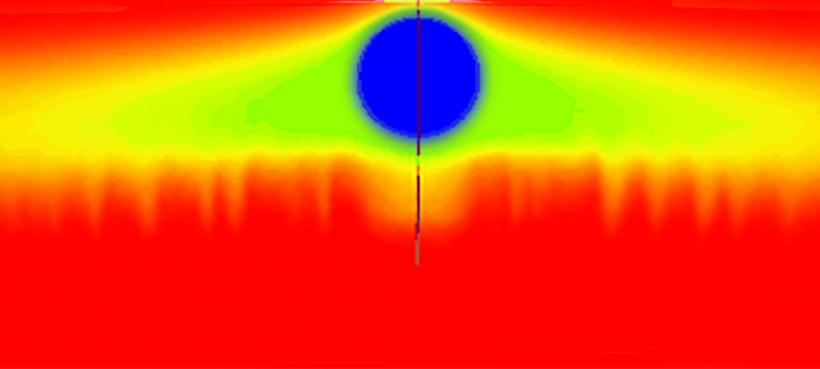
When flowing plasmas interact with solid objects, a wake is formed. Examples of such interactions include probes and other structures in the outer regions of magnetic fusion plasmas; but the the physics is very similar to what happens as the solar wind flows past the moon or a spacecraft. Understanding the behavior of dust particles in plasmas and the interaction of plasmas with their solid surrounding structures requires solution of the same equations.
Computational plasma physics solutions of these complex, nonlinear, multidimensional problems are essential; they are best obtained by the method of numerical simulation called Particle In Cell. Large numbers of representative particles (perhaps a billion or more) are represented in the computer by their position and velocity, and they move by the basic equations of electromagnetism, giving rise to self-consistent electric (and magnetic) fields. Their combined motion then represents the surrounding plasma region (the wake) and their rate of flow to the solid surfaces and the forces they exert can be calculated, accounting for all the complicated geometry and plasma effects.
The stability of plasma wakes is an important basic plasma physics problem that is relatively unexplored. It involves a host of challenging nonlinear phenomena including self-organized structures, eddies in phase-space, and turbulence.

Professor Ian Hutchinson
hutch@psfc.mit.edu